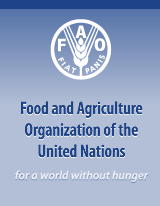Coffee is one of the most valuable primary products in world trade, being second in value only to oil as a source of foreign exchange to developing countries. Its cultivation, processing, trading, transportation and marketing provide employment for millions of people worldwide. Any disruption to trade in coffee would have major and direct negative implications for the livelihoods of rural populations in many developing countries.
Around 2000, there was increasing international attention to the problem of ochratoxin-A (OTA) contamination in coffee and its public health implications. OTA is one of several naturally occurring toxins, known as mycotoxins, which are produced by moulds that grow on crops in the field or in storage. OTA present in green coffee is not completely eliminated during the coffee roasting process.
Regulatory authorities in some coffee importing countries initiated work on the development of proposed maximum levels of OTA contamination in green coffee. Coffee producing countries and the international coffee industry recognized the need to address this public health problem but argued that the proposed limits were stricter than could be justified on the basis of scientific evidence and, that if applied as proposed, could lead to unjustified rejections with consequent negative economic and social impacts on millions of coffee farmers and small traders world-wide.
FAO, in close collaboration with the International Coffee Organization (ICO), and with funding from the Common Fund for Commodities (CFC), launched a 5-year project in 2001 with the main focus of assisting countries to develop national capacities for minimising OTA contamination of green coffee. Implementation partners included national institutes in Brazil, Colombia, Côte d'Ivoire, Ecuador, France, India, Indonesia, Kenya and Uganda.
The project reports and the Guidelines for the Prevention of Mould Formation in Coffee developed through the project can be accessed here.
The training tool on Good Hygiene Practices along the coffee chain is available here
